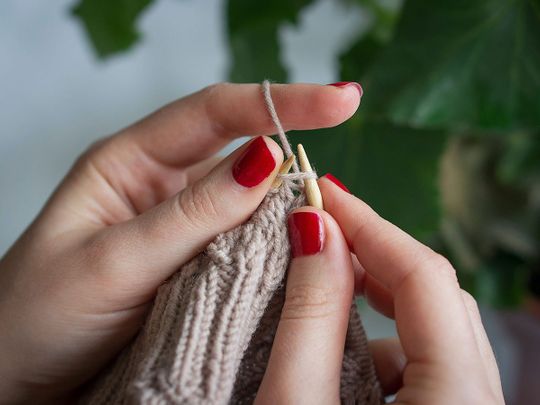
Of all the old-fashioned, domestic crafts, knitting remains one of the most stereotyped. Think of someone knitting, and you probably imagine an old woman in a rocking chair or knitting with a circle of similarly aged friends. Well, that’s no longer the case.
Click start to play today’s knitting themed Word Search.
The documented history of knitting began with a pair of ancient Egyptian socks, which were made some time in the third century AD. But because of that pair of socks’ structural complexity, archaeologists think the craft is actually far older than they can definitively prove, according to a July 2020 report in UK-based news website BBC.
Knitting spread from the Middle East to Europe through Mediterranean trade routes in the 14th century, and especially became popular in England in the Middle Ages, where knitted wool garments were preferred for their weather-resistant qualities.
Since then, knits have fallen in and out of fashion over and over again. Designers like Coco Chanel, Emilio Pucci and Missoni incorporated knits into their signature suits and A-line skirts. Knitting held a steady presence in fashion, even if it was used in conventional ways. But by the end of the 20th century, pioneers like Vivienne Westwood and Alexander McQueen began looking at knits differently – so much so that knits began to be worn in unusual ways, and to create edgier garments.
And so, extreme knitting was born. A look at Icelandic experimental knitwear designer Ýr Jóhannsdóttir’s Cubist-inspired sweaters and facemasks, many with protruding tongues, and you’ll realise what that term means. Knitting slowly began evolving into the opposite of its stereotype – it inspired unique pieces, it was rebellious, and empowering.
When the COVID-19 pandemic hit, knitting exploded. According to UK-based fashion magazine Vogue Business, We Are Knitters (a Spain-based company that sells knitting tools and kits) reported that its annual 10 per cent spike grew to 235 per cent in March 2020. One of the biggest reasons for the craft’s boost in popularity is the fact that it offers a sustainable way to be self-sufficient and creative. And according to Mental Health America’s website, some of the health benefits of knitting include lowered blood pressure, reduced anxiety and distraction from chronic pain.
It’s probably why the knitting community has expanded and diversified. Hop on to Instagram or Twitter and you’ll find a variety of knitting groups that include like-minded people who come together not just to knit but to socialise. In the case of groups like Black Girl Knit Club, the focus is also on shining a light on ethnic minorities within the craft community.
Will the trend of knitting endure? What do you think? Play today’s Word Search and tell us at games@gulfnews.com.









